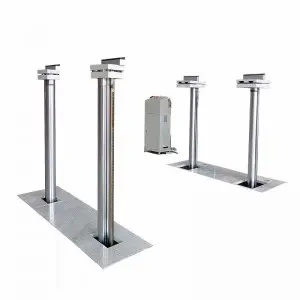When it comes to maximizing the efficiency and safety of your lifting operations, understanding the right lift accessories is paramount. K Lift Accessories offer a broad range of products specifically designed to enhance the performance of your lifting equipment. Whether you are involved in construction, manufacturing, or any industry requiring the movement of heavy loads, equipping your lift with the appropriate accessories will not only improve usability but also ensure safety and compliance with industry regulations.
Understanding K Lift Accessories

The Essential Guide to K Lift Accessories: Everything You Need to Know for Optimal Performance and Safety
K Lift Accessories encompass a variety of tools and attachments designed to enhance lifting operations. These can include items such as slings, hooks, chains, shackles, and rigging gear. They play a vital role in workload management by improving the efficiency of lifting and minimizing the risk of accidents. In this guide, we will elaborate on various types of K Lift Accessories, their uses, and essential tips for choosing the right ones.
Types of K Lift Accessories
1. **Slings**: Slings are one of the most common types of lifting accessories. They come in various materials, including nylon, polyester, and wire rope. Each type has its specific advantages: for instance, nylon slings are lightweight and resistant to abrasion, while wire rope slings are highly durable and suitable for heavy loads. Always select a sling based on the type of load and the environment in which it will be used.
2. **Hooks**: Lifting hooks are crucial for securing loads during lifting operations. They come in various styles, including swivel hooks, safety hooks, and eye hooks. The choice of hook should depend on the type of application and load. Swivel hooks are ideal for dynamic loads that require rotation, while safety hooks prevent accidental unhooking, making them suitable for more critical applications.
3. **Chains**: Chain slings are robust and ideal for heavy lifting tasks. They provide excellent strength and durability, making them suitable for environments with rough handling. When using chain accessories, it is important to adhere to the manufacturer’s guidelines for load limits to prevent failure.

The Essential Guide to K Lift Accessories: Everything You Need to Know for Optimal Performance and Safety
4. **Shackles**: Shackles are used to connect various lifting components such as chains and slings. They come in different shapes, including D-shackles and bow shackles. Selecting the appropriate type of shackle is essential for ensuring that the connection can handle the demanded load safely.
5. **Rigging Gear**: This includes a wide array of accessories that help with the proper arrangement of lifting systems. This can consist of block and tackle systems, pulleys, and more. Rigging gear helps in distributing load evenly, maximizing lifting effectiveness, and enhancing safety.
Importance of Safety and Compliance
When working with lifting accessories such as K Lift Accessories, safety should always be the top priority. Each accessory should be maintained and inspected regularly to ensure it is in good working condition. Regular inspections help identify any wear and tear, allowing for replacement before they pose risks during operations.
Moreover, ensuring compliance with local and international lifting standards (such as OSHA regulations in the U.S.) is crucial. These regulations provide guidelines for how to safely operate lifting equipment and the type of accessories that must be used. Failure to comply can result in significant penalties and more importantly, accidents that could have devastating consequences.
Choosing the Right K Lift Accessories
1. **Evaluate Your Needs**: Before purchasing any accessories, assess the types of loads you will be lifting. Heavy, irregularly shaped, or hazardous materials may require specific accessories.
2. **Check Load Ratings**: Every lifting accessory comes with a designated load rating. Always select accessories that exceed the maximum weight of the load being lifted to account for any dynamic forces that may occur.

The Essential Guide to K Lift Accessories: Everything You Need to Know for Optimal Performance and Safety
3. **Material Matters**: The material of the accessory will significantly influence its performance and safety. Ensure that the materials used can withstand your operating conditions, whether indoors, outdoors, or in hostile environments.
4. **Consult Experts**: If you are unsure about what accessories would be best suited for your lifting operations, consult with industry experts or suppliers. They can provide invaluable guidance in selecting appropriate products based on your specific needs and regulations.
In conclusion, investing in the right K Lift Accessories can greatly enhance the safety and efficiency of your lifting operations. Each accessory serves a unique purpose, and understanding their functions will enable you to optimize your lifting practices. Always prioritize safety and compliance to protect both personnel and cargo during lifting operations.Inground lift
